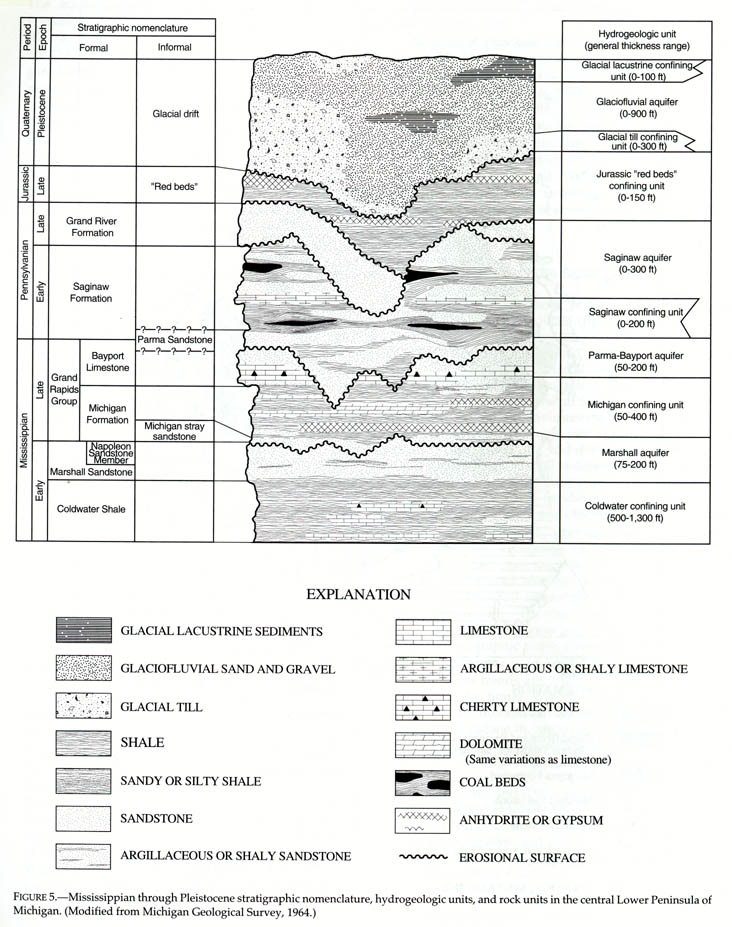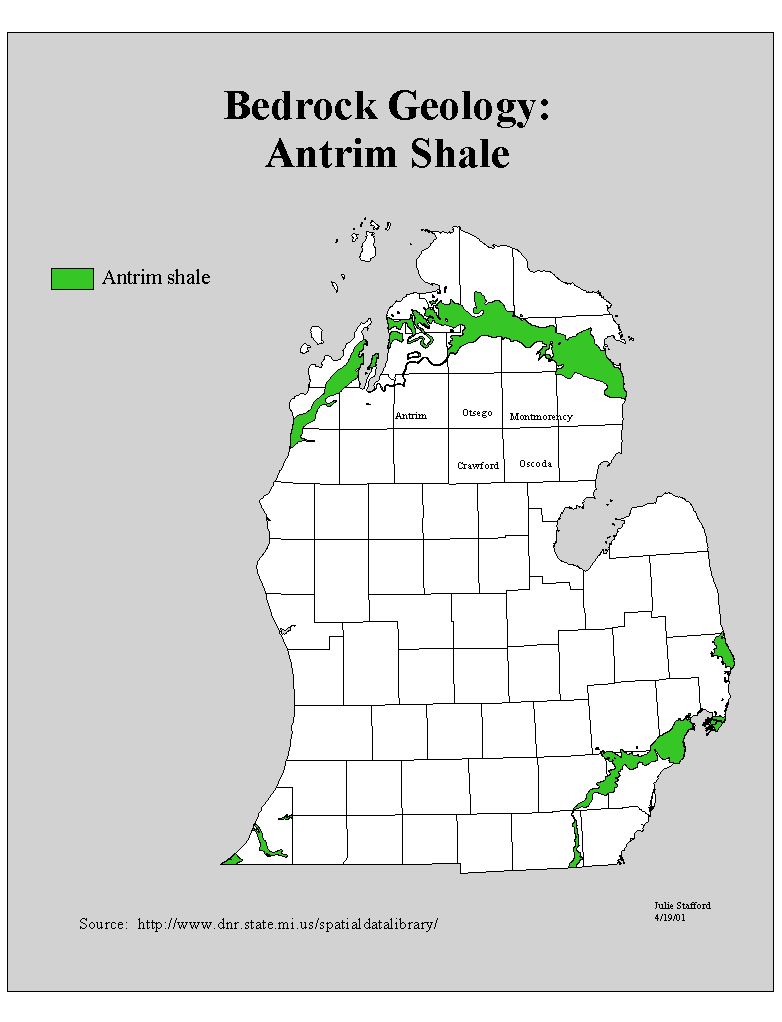The black Mississippian shale, the Antrim shale, the green Ellsworth shale, and the blue Coldwater shales are very useful in the manufacture of cement, brick and tile. Quarries are worked in them in Alpena, Charlevoix, Antrim and Branch counties.
The stratigraphic column below illustrates some of the major shale units, such as the Coldwater, in the Michigan Basin.

The thick accumulation of late Devonian and Mississippian shales on the resistant Silurian dolomites around the western, northern, and eastern margins of the Michigan Basin was very important in determining future topographic features. Because the resistant dolomites form a bedrock high, they almost completely encircle the basin. Erosion of the softer shales by streams and later by glaciers resulted in the formation of Lake Michigan and Lake Huron. Thus the sites of these two lakes were predestined by events that occurred more than 300 million years ago. The location and shape of Lake Superior was determined by events in Keweenawan time, some 1,000-1,200 million years ago.
Shales are an important component in the manufacture of Portland cement.

The map below shows where the Antrim shale crops out in Michigan. Note, however,
that it is NOT drilled for gas where it crops out (all the gas has escaped from these
areas). Rather, it is drilled in places where it is shallowly-buried, to the south
of the outcrop area, in the counties so labelled.

In southern Michigan, the shales of the Michigan Formation are used to make bricks and
clay pottery. In the past, these same shales were used to make clay
pipes, called tiles, which were emplaced in soils to help drain the water
and lower the water table in wet soils.

This material has been compiled for educational use only, and may not be reproduced without permission. One copy may be printed for personal use. Please contact Randall Schaetzl (soils@msu.edu) for more information or permissions.
